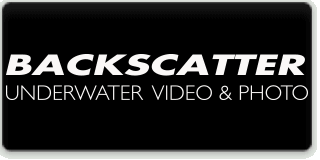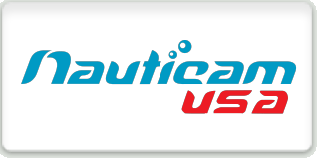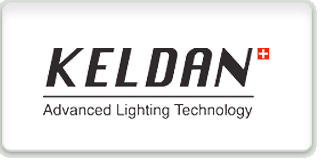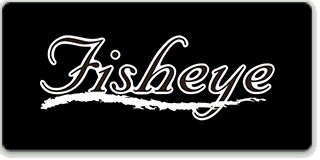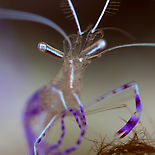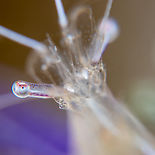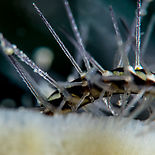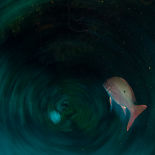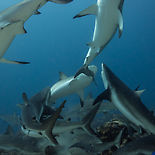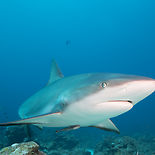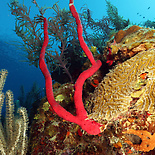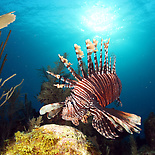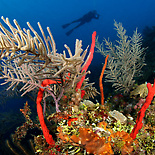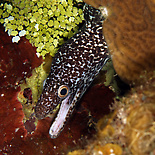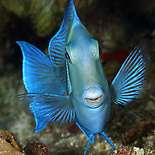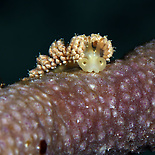GEAR TESTS: CANON 7D MKII
 |
Chris Parsons Nauticam Team Member  |
I've made no bones about my preference for Canon APS-C cameras for underwater shooters. I just recently bought my own 7D Mark II, and kind of consider it my "main camera". I love how fast it shoots, how fast and accurately it focuses. I love the versatility I get shooting it with the 8-15mm lens, and I can switch to the 10-22mm (or the new 10-18mm as an option) to get the rectilinear look. For macro, I can use the Canon 60mm or 100mm, or even got longer with the excellent Sigma 150mm macro. It shoots beautiful video up to 60fps, and nails the color just like other Canon SLRs. I'm convinced that this is the best option for anyone serious about shooting a variety of images + video underwater.
I shot the Pedersen Cleaner shrimp below with the Canon EF 100mm 2.8/L macro lens + Nauticam SMC + SMC Multiplier. That shot is uncropped, and you can see the kind of ridiculous magnification you can get using the SMC + Multiplier using the APS-C sensor. Racking the focus all the way to closest possible focus then gave me even more magnification on the second shot there. I'd like to have more in focus there, but the depth of field at that sort of magnification is like the width of a hair.
The shark shot (Canon EF-S 10-22mm in the Nauticam 230mm dome) is a good example of what you can do using a camera as fast as the 7DII. Shark steals bait, gets bitten by shark, who is also getting bitten by another shark. I have video of the same event (see my A7S review)... and can tell you, this happened in the blink of an eye.
 |
Jean BruneaU Aquatica Technical Advisor  |
This year's Digital Shootout was the perfect venue for field testing our new A7D Mk II housing for the Canon 7D Mk II. This housing has the integrated TTL circuit from Ikelite, with an exposure compensation and manual override knob just perfectly positioned, which makes controlling the strobe exposure an easy, effortless affair. The ergonomics on this A7D Mk II are simply in a class by itself! Every control related to making an image, whether still or video, has been studied and positioned. The feedback was extremely positive, and according to the comments from attendees, the balance underwater is pleasant; same goes for operation of the controls. We knew it to be well balanced underwater, but it's always nice to have someone else confirm this! This housing can be adapted to a wide variety of strobes, ranging from S-TTL through optical fiber, full manual via standard electrical connection, to all- the-way true TTL with exposure control using the option of the integrated Ikelite TTL circuitry. The wired TTL converter coupled to the Ikelite DS-160 and their new battery has got to be the fastest recycling strobe/camera combination out there! It is blisteringly fast! The housing has the whole gamut of Aquatica ports to select from, and can support a truly wide selection of lenses. Ports are securely locked into place with a no frills, reliable, port locking mechanism. Setting up the camera in the housing is a breeze, and the clam shell design with the rotating latch is bound to be the safest closure system out there.
The Canon 7D Mk II is a formidable camera and is perfectly suited for underwater photography, the range of lenses available for underwater use in the APS-C format is impressive. It is my second dive trip with this housing/camera combination, and it surely will not be the last one.
 |
PAUL Orphanidis |
One of the most popular demo systems during the Shootout week, guests gravitated to the Subal housing for its sleek design and comfortable ergonomics. Additionally, they noted the quality and craftsmanship of the housing, which is the benchmark of Subal products. The camera itself is an all-around top performer for those who focus on stills or video, or both. For the still shooter, strobes can be used either with optical cables or with bulk head connectors.
READ MORE GEAR TESTS:

